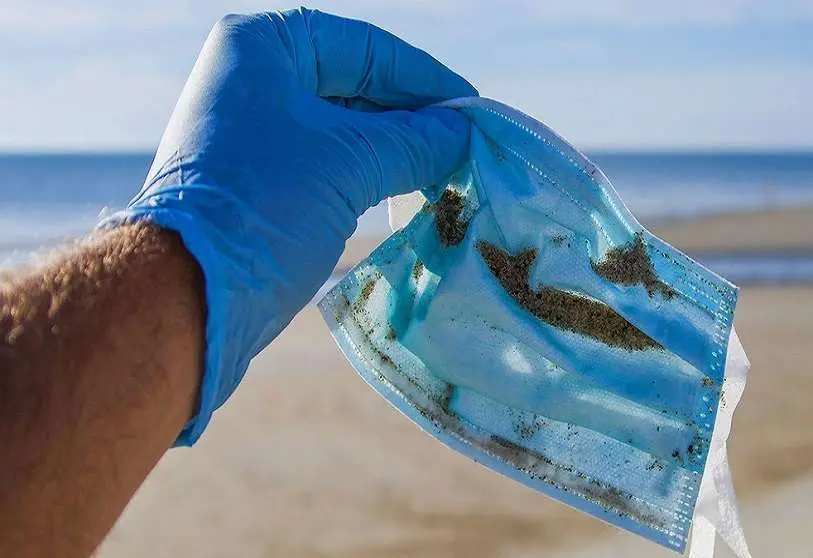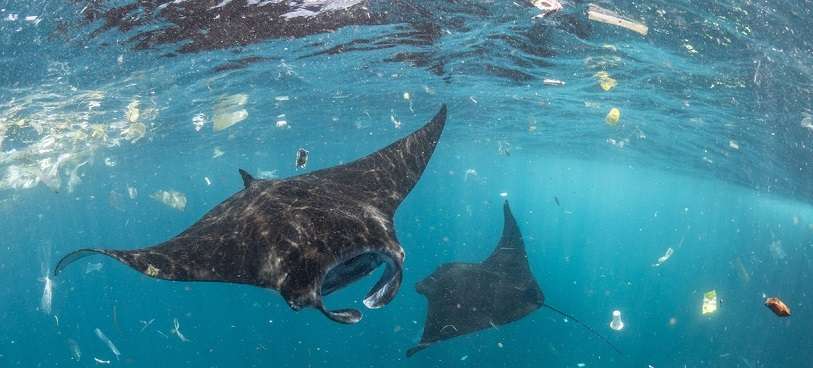Five things to know about disposable masks and plastic pollution

The coronavirus pandemic has led to a large increase in the use of face masks, gloves and other disposable protective equipment, potentially affecting the fight against marine pollution. The various UN agencies and their partners claim that, if a number of effective measures are put in place, the amount of plastics discarded each year can be significantly reduced, if not eliminated.
The coronavirus pandemic has led to a significant increase in the production of disposable face masks. Figures provided by the United Nations Conference on Trade and Development are not misleading and predict that global sales of facemasks will reach about $166 billion in 2020, up from about $800 million in 2019.
For many people, one of the most recent wake-up calls to this problem came when videos and photos of divers collecting masks and gloves littering the waters of the French Riviera appeared in the media. This event is a reminder that politicians, leaders and individuals need to address the problem of discarded plastic pollution.

If historical data is anything to go by, their figures indicate that around 75% of used face masks, as well as other pandemic-related waste, will end up in landfill or floating in the seas.
Environmental damage aside, the United Nations Environment Programme estimates that the financial cost, in areas such as tourism and fisheries, will be around $40 billion.
The Programme warns that failure to properly manage the large increase in medical waste, much of it made from single-use plastics, could lead to uncontrolled dumping.
Possible consequences include public health risks from infected used masks, and open burning or uncontrolled incineration of the masks, leading to the release of toxins into the environment and secondary transmission of disease to humans.
Fearing these potential health and environmental side effects, the Programme urges governments to consider the management of waste, including medical and hazardous waste, as an essential public service. The agency argues that the safe handling and final disposal of these wastes is a vital element of an effective emergency response.
"Plastic pollution was already one of the biggest threats to our planet before the coronavirus outbreak," says Pamela Coke-Hamilton, director of international trade at the United Nations Conference on Trade and Development.
"The sudden boom in the everyday use of certain products to keep people safe and stop disease is making things much worse," she warned.

However, this situation can be changed as a comprehensive report on plastic waste published by The Pew Charitable Trusts, and think tank Systemiq, shows.
The study, endorsed by the UN environment agency's executive director, Inger Andersen, predicts that, if no action is taken, the amount of plastics dumped in the ocean will triple by 2040, from 11 to 29 million tonnes a year.
However, about 80% of plastic pollution could be eliminated in the same period simply by replacing inappropriate regulation: changing the business model and introducing incentives that lead to a reduction in plastic production.
Other recommended measures include designing products and packaging that can be more easily recycled, and increasing waste collection, especially in lower income countries.
In an analysis on plastics, sustainability and development last July, the UN Conference on Trade and Development concluded that global trade policies can also play an important role in reducing pollution.
While many countries have introduced regulations on plastic pollution over the past decade, an indicator of the growing concern surrounding the issue, according to the conference's analysis, coordinated and global rules are needed for these policies to be truly effective.
"The way in which countries have used their trade policies to combat plastic pollution has been largely uncoordinated, limiting the effectiveness of their efforts," says Coke-Hamilton. "There are limits to what any one country can achieve on its own."

While implementing these measures would greatly reduce plastic pollution by 2040, the report by the non-profit organisation Pew and think tank Systemiq acknowledges that even in a best-case scenario, five million tonnes of plastic would still be dumped into the ocean each year.
The study's authors believe that a comprehensive approach to the problem would require a dramatic increase in innovation and investment in the form of technological breakthroughs.
The conference also urges governments to promote non-toxic, biodegradable or easily recyclable substances, such as natural fibres, rice husks and natural rubber.
These products would be more environmentally friendly and, since developing countries are key suppliers of many plastic substitutes, could bring an added benefit: the creation of new jobs.
Bangladesh, for example, is the world's leading supplier of jute exports, while Thailand and Côte d'Ivoire account for the bulk of natural rubber exports.
"There is no single solution to address the issue of plastic waste pollution in the oceans, but through swift and concerted action we can break the plastic tide," said Tom Dillon, Pew's vice president for the environment.
As the organisation's report states, "we can invest in a future with less waste, better health outcomes, greater job creation, and a cleaner, more resilient environment for both people and nature".








